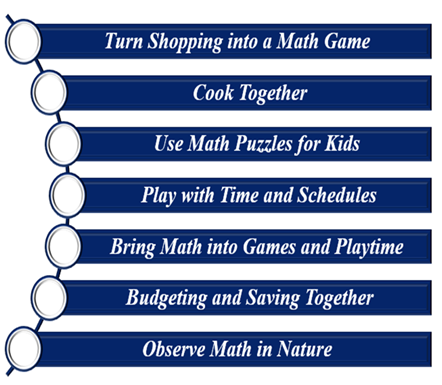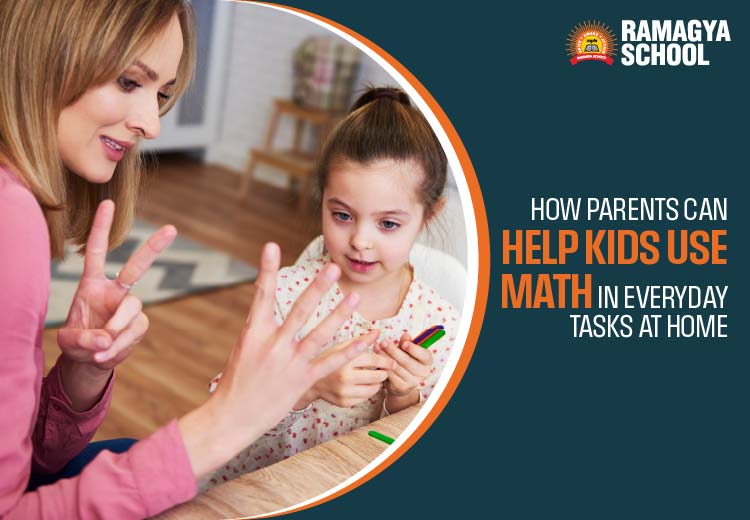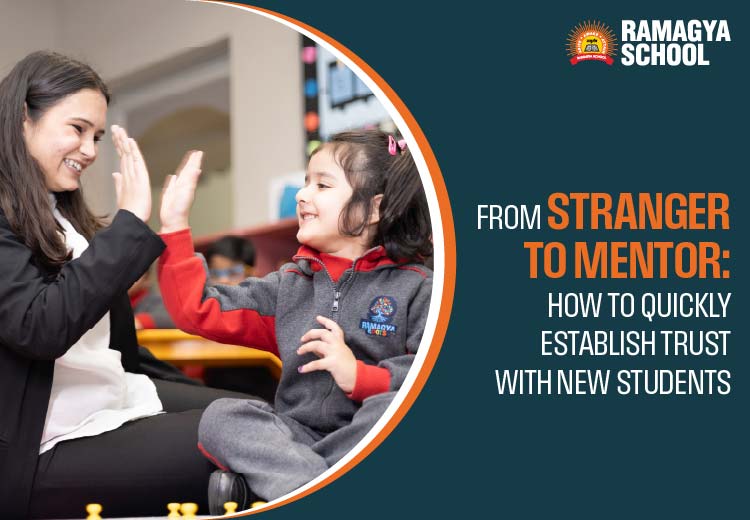Most children see math as something that only exists in the school curriculum, a subject full of formulas, numbers, and problems-solving exercises. However, the truth is that math for children is everywhere in their daily lives from cooking and shopping to playing games and managing time. When kids learn to apply math in their everyday lives, they stop being scared of math and begin having fun with it.
Why Everyday Math is Important
When kids apply math in real-world situations they learn the purpose behind it. Math for kids isn’t simply about memorizing tables and solving equations, it helps students in:
- Develop the ability to think logically
- Develop problem-solving skills
- Improve decision-making
- Understand value and quantity
- Increase confidence in handling time, money and measurement
When kids see math in everyday life, it feels less scary and more interesting.
- Turn Shopping into a Math Game
One of the most effective ways to teach math to kids is to go shopping. Ask them to calculate:
- The total price of the items in your shopping cart
- How much money you’ll save using a discount
- The change you should get back after paying
For example: “We have ₹200 and each apple costs us ₹10. How many apples can we buy?”
This easy task helps improve their subtraction, addition and multiplication skills, without giving them the impression that they’re studying.
- Cook Together – Measure, Mix, and Learn
Cooking is full of numbers! Have your child help to measure ingredients. One cup of flour, half a teaspoon of salt or 200ml of milk.
Explain how changing one ingredient changes the outcome. For example, “If we double this recipe, how much sugar will be required?”
This is not just about teaching measurements but also introduces students to the concept of fractions and ratios in a delicious and enjoyable manner.
- Use Math Puzzles for Kids to Sharpen Thinking

It is possible to make math exciting by including math puzzles for kids in their routine. These puzzles improve reasoning and problem-solving skills.
You can try:
- Sudoku for kids
- Crossword-style number games
- Picture-based logic puzzles
- Tangrams and shape-matching challenges
Include it in your kids’ playtime, perhaps complete a puzzle prior to dinner or during car rides. So, math puzzles for kids can become an enjoyable bonding activity, instead of a boring study assignment.
- Play with Time and Schedules
Have your child read the clock and figure out time variations.
For example:
“If a cartoon starts at 5:30 and ends at 6:00, how long is it?”
or
“If we have to leave the house at 8:15 am, and it takes us 20 minutes to arrive at school, when should we start getting ready?”
These small discussions allow kids to connect math to real-world time management.
- Bring Math into Games and Playtime
Games can make learning effortless. Board games such as Snakes and Ladders, Monopoly or Uno involve counting addition, and strategy. You can also create simple games at home, such as:
- “Guess the Number”
- “How Many Steps to the Door?”
- “Treasure Hunt with Clues Using Numbers”
You can also include math puzzles for kids to play as clues to keep them interested, improve their calculation and reasoning skills.
- Budgeting and Saving Together
Introduce money math by allowing children to use small budgets.
For example:
“Here’s 500 rupees – let’s explore what snacks you can buy for your family.”
or
“Let’s think about your birthday gifts – how much should we save each month?”
Through these real life examples youngsters discover the basics of budgeting, adding & subtraction. They start to realize the importance of savings and value at an early age.
- Observe Math in Nature
Nature is filled with math patterns, shapes and symmetry. Ask your kids to observe:
- The number of petals on a flower
- The shapes of leaves
- The way honeycombs create perfect hexagons
This helps them realize that math doesn’t only exist in books, but is everywhere around them.
Make Math Fun and Fear-Free
Many children fear math because they relate it with pressure and stress. As a parent, your goal is to make math an integral part of your child’s life. Inspire curiosity and appreciation for the effort of your children more than accuracy.
A simple question such as, “Can you figure this out with me?” is more encouraging than “You should already know about this.”
If children see math as a fun challenge instead of a burden they feel confident and have joy in learning.
Bringing Math Closer to Home
Math doesn’t have to be difficult or scary. It’s hidden in every day chore and part of our life from counting biscuits to splitting pizza slices. As parents, the greatest gift you can give your child is the skill to make math fun and useful.
Through simple games, discussions and math puzzles for kids, you can make math for kid‘s exciting, practical and full of curiosity. Because when learning feels real, it stays for life.
FAQs
Q1. How can I make math interesting for my child?
Use games, stories, and math puzzles for kids to make learning fun and interactive.
Q2. What is the right age to start teaching kids math at home?
You can start in preschool. Teach them to count toys, name shapes, and learn simple ideas like “more” and “less.” As they grow, add numbers and small sums.
Q3. How much time should children spend on math daily?
30-40 minutes a day is enough. Keep it short, fun, and regular instead of long lessons.
Q4. Are math puzzles good for young kids?
Yes, math puzzles for kids improve focus, creativity, and logical thinking from an early age.



